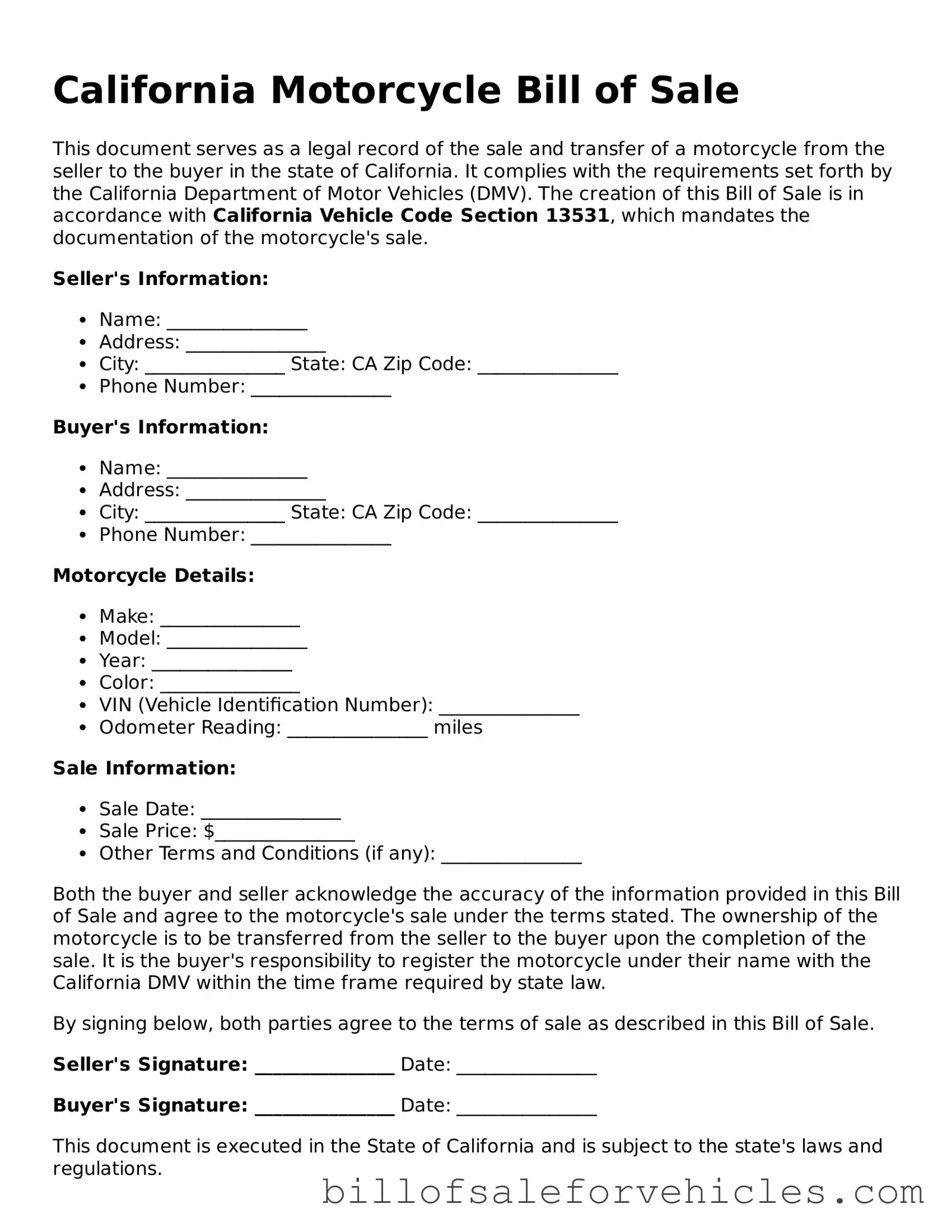What is a California Motorcycle Bill of Sale form?
A California Motorcycle Bill of Sale form serves as a legal document that records the sale and purchase of a motorcycle within California, detailing the transaction between the buyer and seller. It includes important information such as the names and addresses of the parties involved, the motorcycle's description, the sale price, and the date of sale. This document is crucial for transferring ownership and registration of the motorcycle.
Do I need to notarize the California Motorcycle Bill of Sale form?
In California, notarizing the Motorcycle Bill of Sale form is not a mandatory requirement for it to be considered valid. However, having the document notarized can add an extra layer of legal protection and authenticity to the transaction, ensuring that all signatures are verified.
What information should be included in the form?
The Bill of Sale should include the full names and addresses of both the seller and buyer, the motorcycle’s make, model, year, VIN (Vehicle Identification number), the sale price, and the transaction date. Including an odometer reading is also recommended to confirm the motorcycle's condition at the time of sale.
Is the California Motorcycle Bill of Sale form sufficient for ownership transfer?
While this form is a critical part of the process, alone, it is not enough to complete the transfer of ownership. The buyer must submit this form along with the proper application and fees to the California Department of Motor Vehicles (DMV) to legally transfer the motorcycle into their name.
Can I use a generic Bill of Sale form for a motorcycle transaction in California?
While a generic Bill of Sale can be used for motorcycle transactions in California, it is advisable to use a form that complies with California state laws to ensure all necessary information is captured. This will help streamline the process when registering the motorcycle and transferring ownership.
What if the motorcycle has a lien on it?
If there's a lien on the motorcycle, the seller must ensure that the lien is released before completing the sale. The Bill of Sale should mention the lien release to ensure the buyer can register the vehicle without any legal hindrances. Without confirming the lien release, the buyer could face unexpected legal and financial issues.
How do I obtain a California Motorcycle Bill of Sale form?
California Motorcycle Bill of Sale forms can be obtained online from legal forms websites, the California DMV, or local DMV offices. It's essential to ensure that the form complies with California laws and includes all necessary information to avoid any legal complications during the ownership transfer process.
